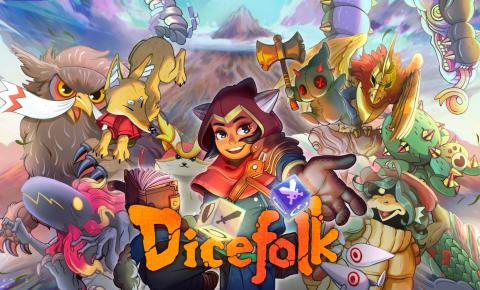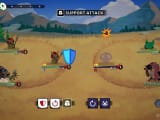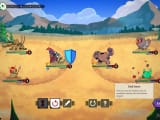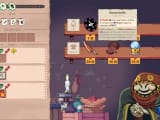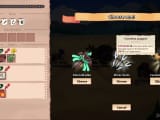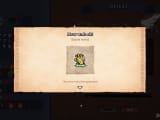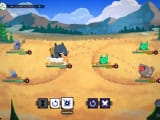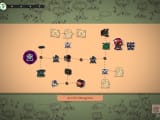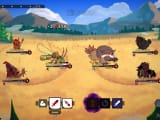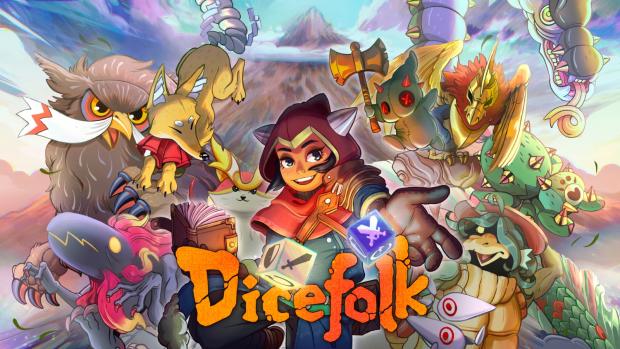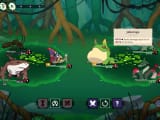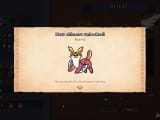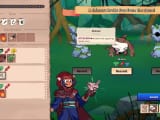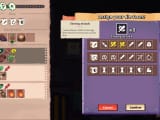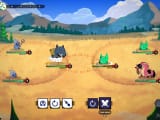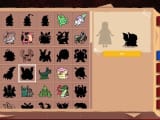Koshmora is a capable enemy, which will inflict confusion on my own chimeras if I exhaust all my dice actions. She also has Fernitsa with her, which means there’s some healing for that three-creature team and is backed up by Armantis, another monster that acts when I run out of dice. So I have to be careful with my team’s moves to avoid unnecessary damage.
Unfortunately, Turboid B, one of the starts for this is still in the line-up and will struggle to be very effective. I plan to use him as a meat shield when needed, protecting his more capable companions, Bakumu and Escabal. This pair of elephant and crab-like creatures is my ticket to victory. I use my dice to give them guard when possible and to launch powerful attacks, chipping away at enemy hit points.
I deploy a thorn token at the right time and then use another to heal the Bakumu. By this point, I also have the Koshmora to destroy and I’m sure that none of my chimeras can be killed. So I switch them around, distributing incoming damage, and continue to roll my dice until the enemy boss is done. I get some solid loot and prepare my team to explore a new biome and engage more enemy groups.
Dicefolk is developed by LEAP Game Studios and Tiny Ghoul, with publishing from Good Shepherd Entertainment. I played it on the PC using Steam. The title challenges players to unlock and collect chimeras and then use dice and tokens to defeat enemies.
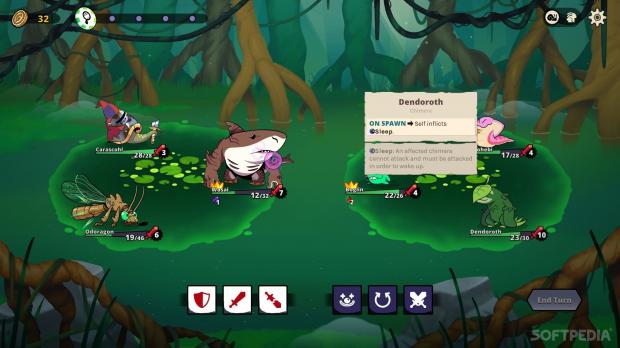
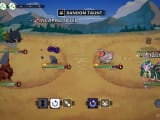
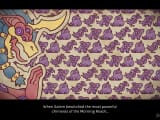
The narrative setup isn’t very complex. A powerful evil summoner has turned a host of fantasy creatures against humanity and his power lingers over the land. The only way to deal with him is to regain control over all these chimeras, which can be done only by heroes who also have power over dice. Players start off able to use only one talisman (there are three more to unlock) and the game reveals extra lore along the way.
This is not a narrative-heavy game. The chimeras themselves are, in part, inspired by a classic Japanese collectible creature franchise. The writing is mostly functional, designed to give players a clear idea of the abilities of their units and how they can be tweaked using the many items they can equip.
Dicefolk does introduce plenty of interesting twists in the gameplay department. Every battle involves a group of three chimeras on the player’s side, with an equal or smaller number of opponents facing them. The game is turn-based and built around dice, which are rolled from a pool for each side, and feature actions.
A creature can directly attack the one in front of it (there are variations to the core strike). Or it can rotate to the left or right. The game also features special attacks and abilities that trigger when certain conditions are met. It’s a good idea to look for synergies and be aware of what abilities enemy chimeras have.
The big twist is that gamers will need to activate the dice for both their team and those of their opponents before ending a turn. And all the enemy moves need to happen, including the move ones. Dicefolk wants players to know exactly what everyone involved in a battle can do and then find out the sequence that can deal damage to enemies, protect the player’s team, and activate some special abilities along the way if possible.
Combat is enhanced by tokens, which can be acquired once the enemy team is defeated or bought in shops. They can revive chimeras, heal them, add guard, activate a thorns keyword, and more. I tended to save them but it’s a viable strategy to deploy them to limit an opponent’s ability to score hits as much as possible.
Outside of combat, Dicefolk’s structure is traditional. Players move from node to node. Those that do not involve violence feature shops, campfires to regain health at, shrines where new chimeras are liberated, artists that sketch creatures to recruit, smiths that will enhance dice and others. Make sure to take advantage of every opportunity to extend the chimeras’ inventories and then use items to boost their capabilities.
And, of course, each map ends with a boss battle. They do represent massive difficulty spikes but are challenging, mainly because of their higher health and powerful abilities. This is where it’s most likely a run will end. When that happens, players will unlock a range of new content that they might encounter on their next attempt.
I would have liked to get more narrative-focused events at the strategic level and a more unique avenue than the shrines to recruit new chimeras. But combat is genuinely exciting. Normal battles are fast and I tended to focus more on damage reduction than quickly killing opponents. Elites and bosses force players to use their tokens and discover tactics that can limit the impact of special abilities.
Dicefolk adopts a presentation style that merges its obvious influences with the expectations of tactical rogue-lite fans. Chimeras, both the players control and those they battle, manage to be cute and detailed despite their murderous intent. It’s always a good idea to hover over everything, from creatures to dice to tokens, to get a clearer understanding of what they do.
Strong interface design is an asset for the genre, especially given that the title introduces a lot of creatures and equipment. The sound design isn’t as good. Combat sounds are serviceable but do not stand out. The music is optimistic and jaunty, but it can become annoying after a while, easily replaceable with some good podcasts.
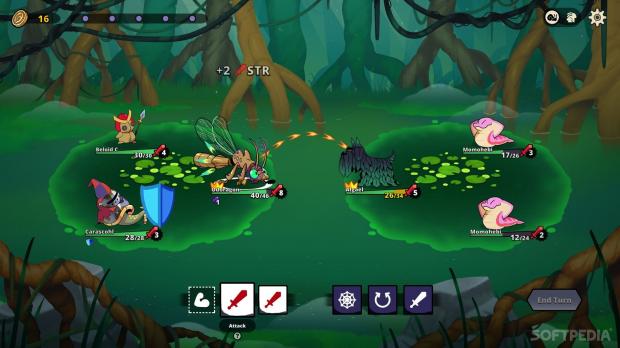
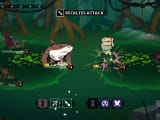
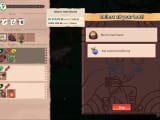
The Good
- Dice-driven combat
- Chimera design and abilities
- Token and item variety
The Bad
- Familiar narrative
- Limited event interactions
- Under-developed sound design
Conclusion
While the chimera idea is interesting, the game failed to draw me into its universe. Dicefolk knows the genre it's working in and has the innovation required to draw in veterans looking for new ideas but it might struggle to keep them interesting in the long run.
Review key provided by the publisher.
 14 DAY TRIAL //
14 DAY TRIAL // 